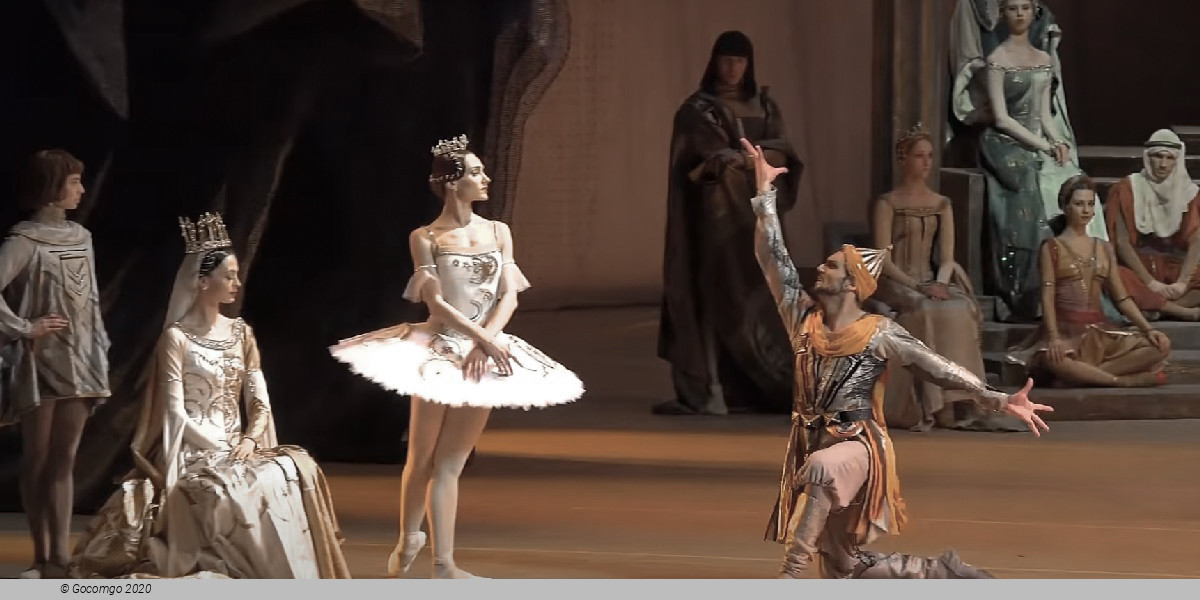Events21 results
About
Ivan Aksandrovich Vsevolozhsky (1835–1909) - Russian theatrical and museum worker, screenwriter, artist; Privy Counselor, Chief Chamberlain [3]. In the years 1881-1899 - Director of the Imperial Theaters. In 1899-1909 - Director of the Imperial Hermitage.
Son of A. V. Vsevolozhsky, grandson of Prince I. D. Trubetskoy, elder brother of Pavel Vsevolozhsky. Born on April 2, 1835. He graduated from the Imperial St. Petersburg University. Consisted in the diplomatic service, he served at the office of the Ministry of Foreign Affairs in Paris.
In 1881, painted a fan with 33 caricatures of state and public figures - members of the State Council in Chinese and Japanese costumes.
In 1881–1886 - Director of the St. Petersburg Imperial Theaters, in 1886-1899 - Director of the St. Petersburg and Moscow Imperial Theaters. During this period, Vsevolozhsky conducted a series of important artistic and organizational reforms; He was the initiator of theatrical reform of 1882, in connection with which, in particular, the funding of theaters was increased, the legal relations between theaters and composers were changed.
On the initiative of Vsevolozhsky, Pyotr Ilyich Tchaikovsky was ordered the music of the ballets Sleeping Beauty (Vsevolozhsky and Marius Petipa - ballet scriptwriters) and The Nutcracker, as well as the ballets Trial of Damis and Seasons by Alexander Konstantinovich Glazunov in St. Petersburg Hermitage St. Petersburg. . Vsevolozhsky is also the author of costume sketches for 25 ballet performances (including the Sleeping Beauty, Nutcracker, Raimonde). Since 1889 - Honorary Member of the St. Petersburg Philharmonic Society. “The good genius of the Russian theater,” as the press called it, defended the building of the Alexandrinsky Theater from perestroika.
In 1899 he became director of the Hermitage. He had wide connections abroad, he understood the significance of the Hermitage as a museum that collected unique works of world culture in its halls. Vsevolozhsky attracted to the Hermitage a number of promising specialists related to collectors and artists, whom Alexander Benoit united around the magazines “Art Treasures of Russia” and “Old Years”.
In 1906, in memory of the 50th anniversary of the civil service of I. A. Vsevolozhsky, a silver medal was issued (medalist A. A. Griliches-son; the flip side was made according to the model of M. Dillon).
He died on November 10, 1909. Buried at Nikolsky cemetery of the Alexander Nevsky Monastery.
His wife is the Most High Princess Yekaterina Dmitrievna Volkonskaya (1846-1898), Maid of Honor, granddaughter of the Minister of the Court of Prince P. M. Volkonsky; daughter of the chamberlain prince Dmitry Petrovich Volkonsky (1805-1859) from his marriage with Maria Petrovna Kikina (1816-1856). According to a contemporary, the woman was very intelligent, restrained, domineering. She knew how to keep the whole house in order, but she never interfered in the affairs of her husband. Collected portrait miniature. From her grandfather, PA Kikin, inherited the Ryazha mansion Alyoshnya. After the death of his wife, I. A. Vsevolozhsky decided to sell the estate and moved to St. Petersburg a family archive, a collection of paintings (which included not only miniatures collected by his wife, but also engravings of Western European graphics, rare historical compositions of Chatillon, as well as family portraits of Vsevolozhskys, painted A.O. Dezarno in the 1820s) and a large library, for which Falqueresi was made exlibris with the family coat of arms. After 1917, all the Vsevolozhskys' books were transferred from Aleshni to the library of the publishing house World Literature, from where part of the books were sent to the Book Fund.


